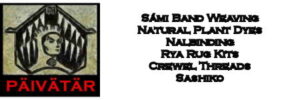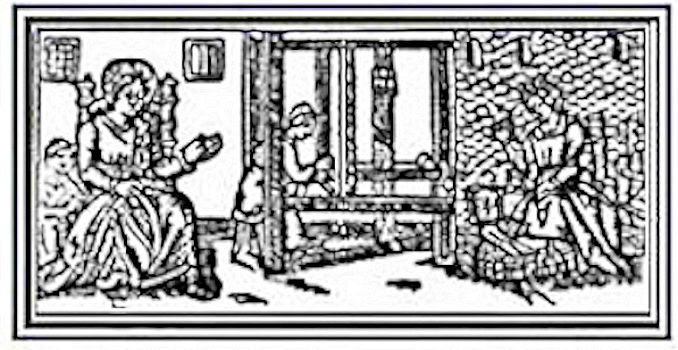Throughout history Scottish Tartans have been used for showing kinship with a clan. The clan system started in the 12th Century. Weavers developed their own colours and patterns for the tartans using natural dyestuffs found in their region.
The number of colours used identified rank, from 1 colour for servants to 7 colours for the Chief.
There are a number of on-line databases with information about tartans.
Electric Scotland
House of Tartan
Tartan Finder
A Guide to Scottish Tartans
This link to a comprehensive guide about tartans was provided by Lily B., while she was researching about her Scottish heritage, as part of her Girl Scout Troup’s Family Heritage Fun patch.
Thank you Lily for your contribution to this page.
Tartans are woven in a balanced twill using a striped warp arranged in the specific order of the clan. The colour order is repeated in the weft. The diagonal line of the twill is woven at 45 degrees in order weave a perfect square.
Tartans are generally woven of wool. Other fibers may be used as well if the warp and weft are of the same fiber, and following the specific order of the sett.
The famous Harris tweeds have their own unique scent. This is due to the type of lichen that the yarns are dyed with.
Crottle lichen (Parmelia omphalodes) is boiled with the wool in iron pots to create browns, yellows and golds. Because this lichen was associated with the earth, it was thought that when undertaking a long journey, socks should be dyed with crottle.
Cudbear (Ochrolechia tartarea) lichen gave crimson dyes. The lichen was sun-dried and crushed. It was then steeped in urine for about 3 weeks, before it was boiled in a dyebath. If soaked in ammonia, cudbear produces a bright pink or purple dye. Adding soda to a dyebath gives a red-purple colour and blue-purple with vinegar.
Cudbear ManufactoryRock tripe (Umbilicaria mammulata) produced mauve when the wool was treated with ammonia or urine.
Sea Ivory or Grey Beard lichen (Ramalina siliquosa) were used for orange/brown dye. It was also used for starch in making hair powders for wigs during the 18th century.
Natural Dyes
Lichen Dyes
Natural Dyes
Fungi and Natural Dyes
Tartan Books
Tartan (Textiles That Changed the World)
The sett and weaving of tartans
Tartans: Their Art and History
 LONGTHREAD MEDIA VIDEO
LONGTHREAD MEDIA VIDEO
 LONGTHREAD MEDIA SUBSCRIPTIONS
HANDWOVEN MAGAZINE
PIECEWORK MAGAZINE
SPINOFF MAGAZINE
LEARN LONGTHREAD MEDIA
PAIVATAR HANDMADE
LONGTHREAD MEDIA SUBSCRIPTIONS
HANDWOVEN MAGAZINE
PIECEWORK MAGAZINE
SPINOFF MAGAZINE
LEARN LONGTHREAD MEDIA
PAIVATAR HANDMADE
 Paivatar on YouTube
Visit my YouTube channel for how-to craft videos.
Paivatar on YouTube
Visit my YouTube channel for how-to craft videos.
Or Please visit my Channel on Rumble for more how-to videos.
https://rumble.com/Paivatar
LIVE STREAMS - Paivatar Studio
KICK
TWITCH MAKERS&CRAFTING
YOUTUBE
Categories: HAND WEAVING


